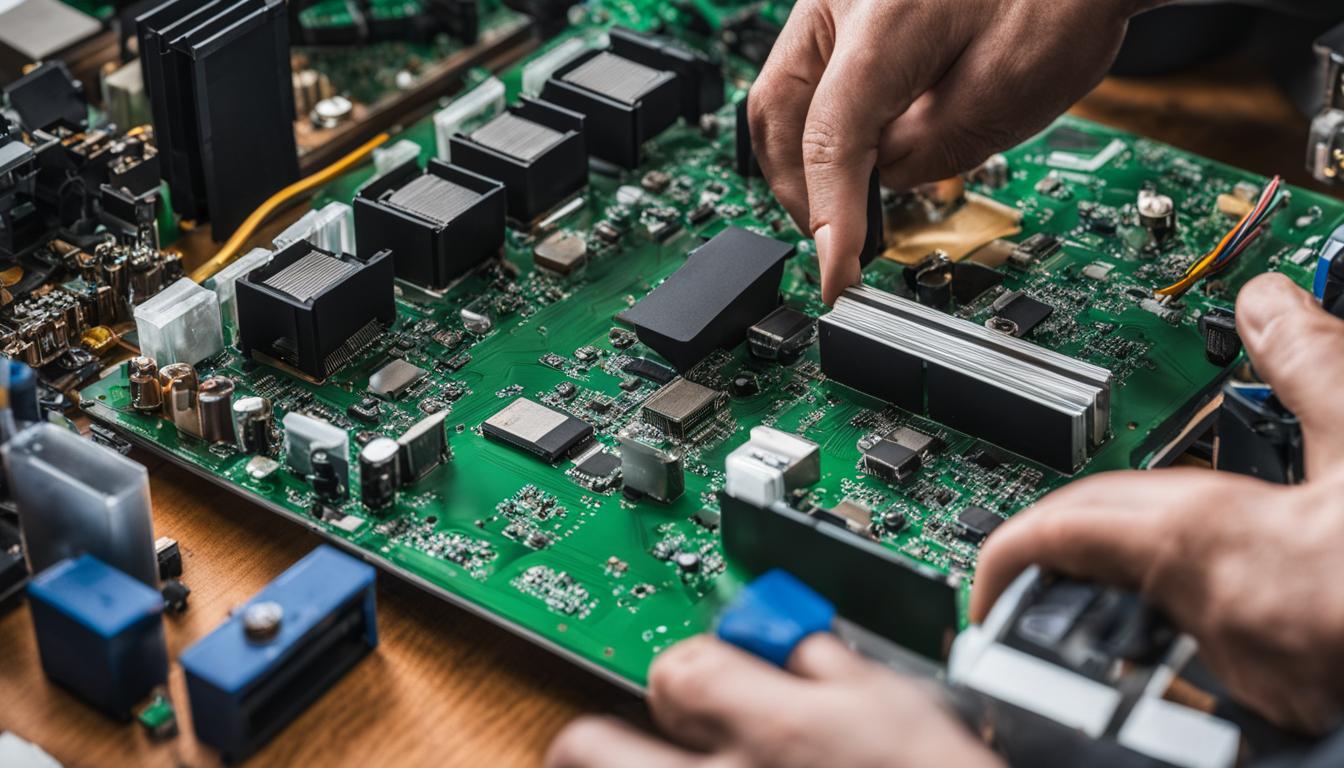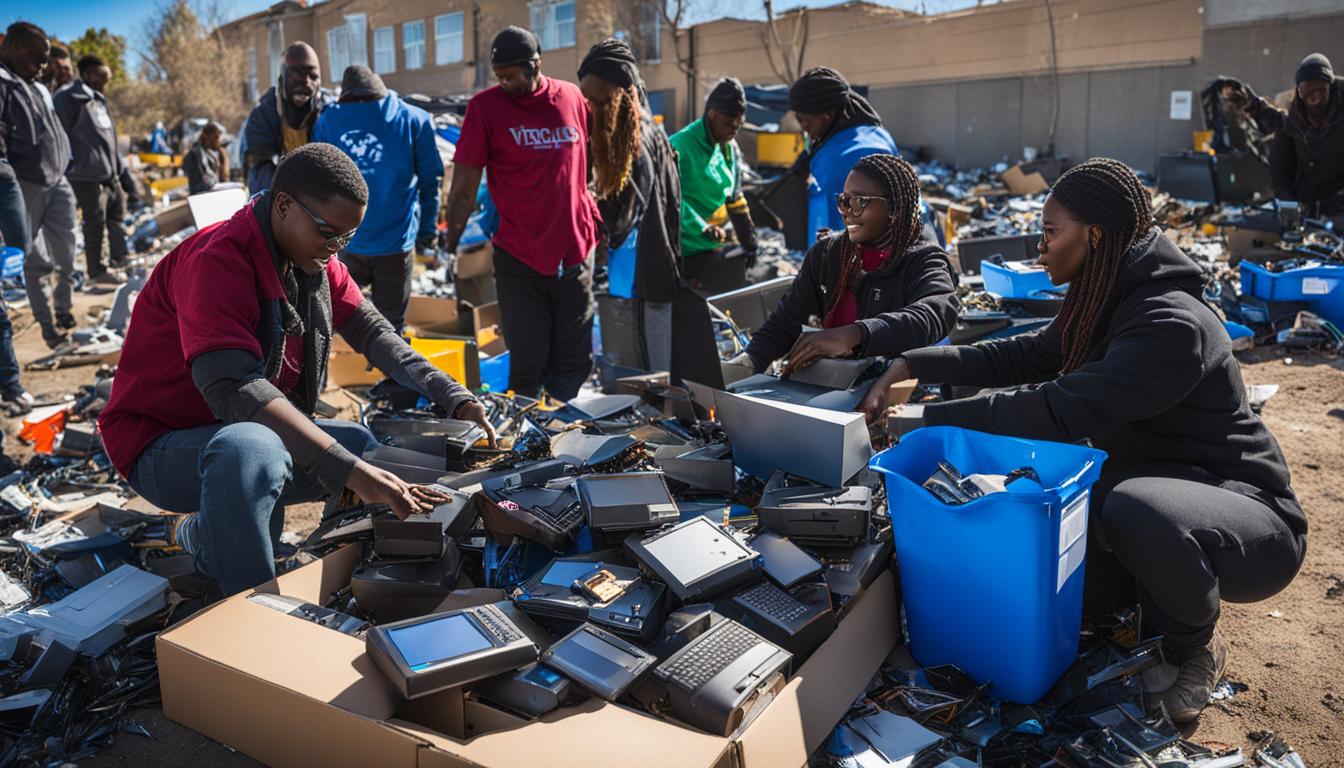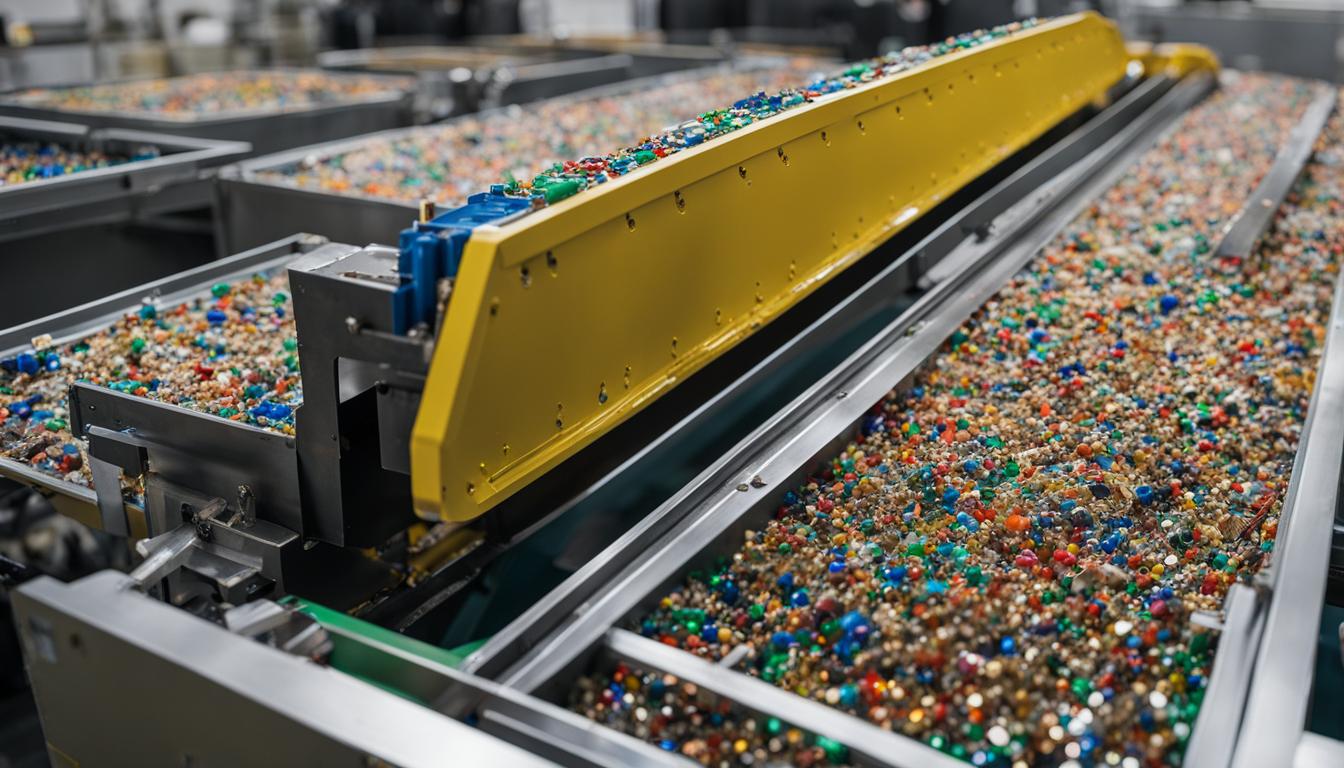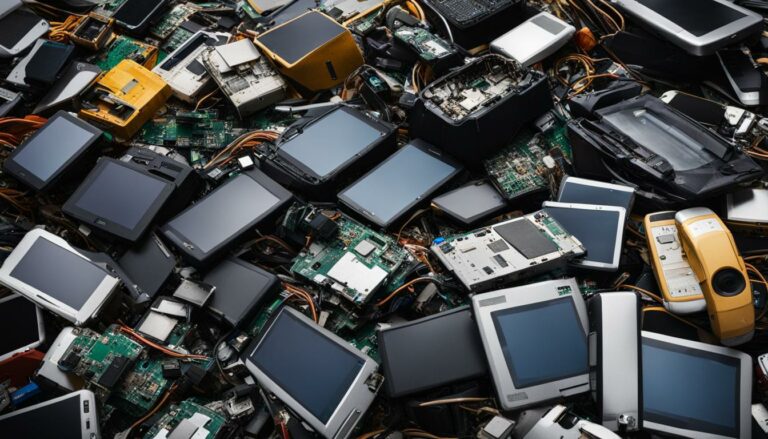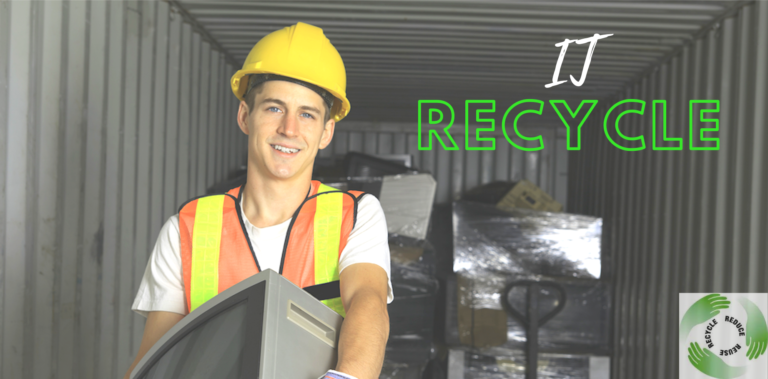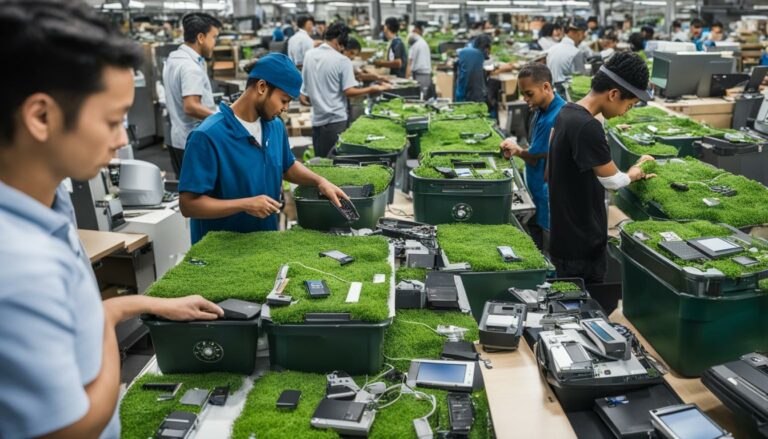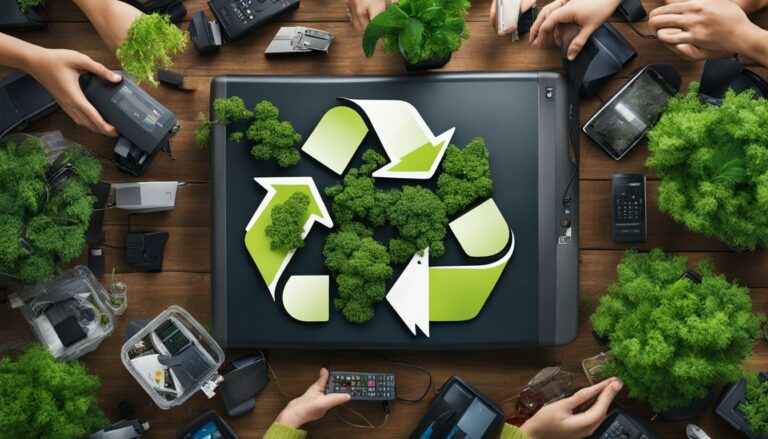Recycling vs. Upcycling: IT Equipment Edition
Recycling and upcycling are two different approaches to managing IT equipment waste. Recycling involves breaking down the components of a product to be used as raw materials for new products. Upcycling, on the other hand, involves creatively reusing the product or its parts to create a new item of higher value or quality. IT equipment upcycling is a more eco-friendly and sustainable solution compared to traditional recycling methods, as it reduces the environmental impact and extends the lifespan of electronic devices.
Key Takeaways
- IT equipment upcycling is an eco-friendly alternative to traditional recycling methods.
- Upcycling involves creatively reusing IT equipment to create new products.
- Upcycling reduces electronic waste and extends the lifespan of electronic devices.
- IT equipment upcycling supports a more sustainable and circular economy.
- Choosing upcycled IT equipment promotes environmentally friendly electronics.
The Difference Between Recycling and Upcycling
When it comes to managing IT equipment waste, there are two distinct approaches: recycling and upcycling. Recycling involves breaking down the components of a product to be used as raw materials for new products, while upcycling entails creatively reusing the product or its parts to create a new item of higher value or quality. As the world increasingly embraces eco-friendly technology and sustainable IT solutions, upcycling has emerged as a more viable and environmentally friendly option compared to traditional recycling methods.
The key distinction between recycling and upcycling lies in the process itself. Recycling typically involves melting down materials to create new products, consuming a significant amount of energy and often producing pollution. On the other hand, upcycling takes existing items and repurposes them without altering their form. This process results in a lower environmental impact, as it reduces energy consumption and carbon dioxide emissions associated with the recycling process.
Upcycling IT equipment not only reduces the environmental impact but also extends the lifespan of electronic devices, promoting a circular economy and reducing electronic waste.
IT equipment upcycling allows for the creation of unique and functional products using discarded computer equipment, further supporting the idea of a circular economy. By repurposing old devices, upcycling reduces electronic waste, conserves natural resources, and promotes a sustainable future. It provides an opportunity to transform discarded electronic components into valuable and unique items, such as upcycled computer accessories and recycled tech products, showcasing the potential of repurposed computer equipment.
| Recycling | Upcycling |
|---|---|
| Breaks down components to create new products | Creatively reuses products or parts without altering their form |
| Consumes energy and produces pollution | Reduces energy consumption and carbon dioxide emissions |
| Provides raw materials for new products | Transforms discarded components into unique and valuable items |
The Benefits of IT Equipment Upcycling
IT equipment upcycling offers numerous benefits in terms of environmental sustainability and support for local businesses. By choosing upcycled IT equipment, individuals and businesses can contribute to a greener future while also enjoying unique and functional electronics.
One of the primary benefits of IT equipment upcycling is the reduction of electronic waste. By creatively reusing old devices or their parts, upcycling minimizes the amount of electronic waste ending up in landfills. This helps to prevent harmful materials from polluting the environment and reduces the need for new raw materials.
Additionally, upcycling extends the lifespan of electronic devices, conserving natural resources. By giving new life to old equipment, upcycling reduces the demand for new products and the associated environmental impact of their production. This promotes a circular economy, where resources are used more efficiently and waste is minimized.
Furthermore, supporting local and small business owners who specialize in electronics repair and upcycling is another benefit of IT equipment upcycling. By choosing to upcycle, individuals and businesses contribute to the growth of these businesses, helping to sustain local economies and promote green IT initiatives.
Benefits of IT Equipment Upcycling:
- Reduces electronic waste
- Conserves natural resources
- Supports local and small businesses
Upcycling old IT equipment promotes a circular economy, reduces electronic waste, and supports sustainable and eco-friendly practices. By choosing upcycled electronics, individuals and businesses can contribute to a greener future while enjoying unique and functional technology.
| Benefit | Description |
|---|---|
| Reduces electronic waste | By creatively reusing old devices or their parts, upcycling minimizes the amount of electronic waste ending up in landfills. |
| Conserves natural resources | By extending the lifespan of electronic devices, upcycling reduces the demand for new products and conserves precious natural resources. |
| Supports local and small businesses | Choosing upcycled IT equipment helps sustain local economies and supports businesses specializing in electronics repair and upcycling. |
Overall, IT equipment upcycling offers numerous benefits, from reducing electronic waste to conserving natural resources and supporting local businesses. By incorporating upcycled electronics into our lives, we can contribute to a greener and more sustainable future.
Tips for IT Equipment Repair and Upcycling
Repairing and upcycling IT equipment can be a cost-effective and environmentally friendly way to extend the lifespan of your devices and reduce electronic waste. Whether you’re looking to save money or contribute to a more sustainable future, here are some tips to get you started on repairing and upcycling your IT equipment.
1. Simple Repairs and Diagnostics
Many common issues with IT equipment can be resolved through simple repairs or diagnostics. For example, if your computer is running slowly, you can try cleaning out the dust from the fans and updating your software. If your smartphone’s battery is draining quickly, you can try closing unnecessary apps and disabling background processes. There are numerous video tutorials available online that provide step-by-step instructions for diagnosing and fixing common problems.
2. Seek Help from Local Repair Businesses
If you encounter more complex issues that require specialized knowledge or equipment, it’s recommended to seek help from local repair businesses. Not only can they provide expert advice and assistance, but supporting local businesses also helps reduce carbon emissions from transportation. By choosing local repair services, you can contribute to the growth of your community’s economy and reduce the environmental impact of IT equipment repairs.
3. Donate or Resell Old Devices
Instead of letting your old IT equipment gather dust in storage, consider donating or reselling them. Donating your devices to organizations or individuals in need can help bridge the digital divide and provide access to technology for those who may not be able to afford it. Alternatively, you can resell your old devices through online marketplaces or trade them in for store credit towards new purchases. By giving your devices a second life, you contribute to their reuse and reduce electronic waste.
| Upcycling Ideas | Benefits |
|---|---|
| Create computer accessories such as mouse pads, cable organizers, or phone stands using old components. | Reduces the need for new accessories and promotes resource conservation. |
| Transform old laptops or desktops into media servers, home surveillance systems, or retro gaming consoles. | Extends the lifespan of the devices and promotes their functional reuse. |
| Repurpose smartphone screens or tablets as digital photo frames or recipe holders. | Reduces electronic waste and provides a unique and personalized use for old devices. |
Remember to always prioritize safety when repairing or upcycling IT equipment. Make sure to unplug devices and follow proper safety guidelines to avoid injury or damage. By taking the time to repair and upcycle your IT equipment, you can not only save money but also contribute to a more sustainable and circular economy.
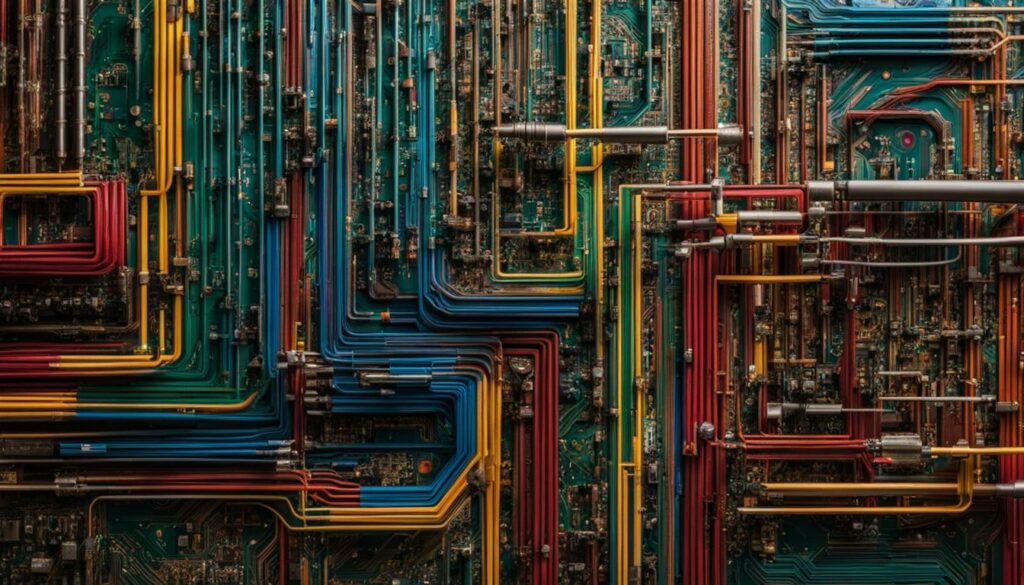
The Importance of the Circular Economy in IT Equipment Upcycling
IT equipment upcycling plays a crucial role in embracing the principles of the circular economy, which aims to minimize waste and maximize resource efficiency. By adopting a circular approach to IT equipment management, we can reduce our carbon footprint, contribute to the reduction of electronic waste, and support a sustainable future. The circular economy promotes reuse, repair, refurbishment, remanufacturing, and recycling to create a closed-loop system, ensuring that resources are kept in circulation for as long as possible.
Embracing the circular economy in IT equipment upcycling can help combat climate change and preserve natural resources. By reusing and repurposing discarded devices, we extend their lifespan and reduce the need for new raw materials. This not only conserves valuable resources but also reduces the environmental impact associated with the manufacturing and disposal of electronic devices. It also supports the growth of local businesses that specialize in electronics repair and upcycling, fostering economic development within communities.
The Benefits of the Circular Economy in IT Equipment Upcycling:
- Promotes resource efficiency by extending the lifespan of electronic devices
- Reduces electronic waste and prevents harmful materials from ending up in landfills
- Supports local businesses and contributes to the growth of a circular economy
- Minimizes the environmental impact of manufacturing and disposal processes
- Contributes to a greener future and sustainable IT solutions
By embracing the circular economy in IT equipment upcycling, we can transform electronic waste into valuable and unique items, promoting a more sustainable and environmentally friendly approach to technology.
| Benefits of Circular Economy in IT Equipment Upcycling | Key Points |
|---|---|
| Promotes resource efficiency | Extends the lifespan of electronic devices |
| Reduces electronic waste | Prevents harmful materials from ending up in landfills |
| Supports local businesses and circular economy | Contributes to economic development and sustainability |
| Minimizes environmental impact | Reduces energy consumption and pollution |
| Promotes a greener future | Contributes to sustainable IT solutions |
Examples of IT Equipment Upcycling
IT equipment upcycling offers endless possibilities for creative and practical repurposing. Here are some inspiring examples of how discarded computer equipment can be transformed into unique and functional items:
1. Upcycled Computer Accessories
One popular trend in IT equipment upcycling is the creation of stylish computer accessories made from recycled tech components. Old keyboards can be transformed into key racks or wall decorations, providing a quirky and functional addition to any workspace. Motherboards can be repurposed into eye-catching coasters or even jewelry, adding a touch of tech-inspired elegance to everyday items. These upcycled accessories not only showcase innovation and craftsmanship but also serve as a visual reminder of the importance of sustainability.
2. Recycled Tech Products
Some companies specialize in upcycling IT equipment to produce a range of recycled tech products. These products include items such as upcycled laptops, tablets, and smartphones, which have been refurbished and restored to full functionality. By extending the lifespan of these devices, manufacturers contribute to reducing electronic waste while offering consumers more affordable and environmentally friendly alternatives. Recycled tech products not only save valuable resources but also provide access to technology for those who may not be able to afford brand new devices.

These examples illustrate the creative potential of IT equipment upcycling and the positive impact it can have on reducing electronic waste. Whether it’s turning old keyboards into unique decor or refurbishing discarded devices, upcycling allows us to reimagine the value and functionality of IT equipment, transforming it into something new and exciting.
The Environmental Impact of IT Equipment Recycling
Although recycling is a common method for managing electronic waste, it still has significant environmental implications. The recycling process often involves the use of chemicals and mechanical procedures, which consume energy and produce pollution. These processes can contribute to carbon emissions and contaminate air, water, and soil. It’s important to consider the environmental impact of IT equipment recycling and explore more sustainable alternatives.
One key concern with IT equipment recycling is the energy consumption associated with the process. Recycling facilities require significant amounts of energy to power the machinery involved in the disassembly and separation of electronic components. This energy consumption contributes to greenhouse gas emissions, further exacerbating climate change. Additionally, the transportation of electronic waste to recycling centers can also lead to carbon emissions, especially when waste is shipped over long distances.
Furthermore, the recycling process itself often generates pollution. Certain electronic components contain hazardous materials such as lead, mercury, and brominated flame retardants. When these materials are released during the recycling process, they can contaminate the environment and pose risks to human health. Additionally, improper recycling techniques can result in the release of toxic gases and the improper disposal of waste materials, further contributing to pollution.
| Environmental Impact of Recycling | Environmental Impact of Upcycling | |
|---|---|---|
| Energy consumption | High | Low |
| Carbon emissions | High | Low |
| Pollution | Potential for hazardous material release and improper waste disposal | Reduced risk of pollution and contamination |
Considering these environmental challenges, IT equipment upcycling offers a more eco-friendly alternative. By directly reusing the devices or their parts, upcycling reduces the energy consumption and pollution associated with traditional recycling methods. It eliminates the need for extensive disassembly and separation processes, minimizing the use of chemicals and energy-intensive machinery. Upcycling also reduces the transportation-related carbon emissions since the devices can be repurposed locally, further contributing to a more sustainable approach to managing electronic waste.
Conclusion
IT equipment upcycling is a sustainable and environmentally friendly solution for managing electronic waste. By reusing and repurposing discarded devices, upcycling reduces electronic waste, conserves natural resources, and supports the growth of a circular economy. Upcycled computer accessories and recycled tech products offer functional and unique alternatives to traditional IT equipment.
Choosing upcycled options can contribute to a greener future and promote the adoption of sustainable IT solutions. By embracing IT equipment upcycling, individuals and businesses can play their part in reducing electronic waste and minimizing the environmental impact of technology.
By supporting the upcycling of IT equipment, we can move towards a more sustainable and eco-friendly approach to electronics, where every device has the potential for a new life and valuable contribution to the circular economy.
FAQ
What is the difference between recycling and upcycling?
Recycling involves breaking down the components of a product to be used as raw materials for new products, while upcycling creatively reuses the product or its parts to create a new item of higher value or quality.
Why is IT equipment upcycling considered more eco-friendly?
IT equipment upcycling is more eco-friendly because it reduces the environmental impact and extends the lifespan of electronic devices, compared to traditional recycling methods.
What are the benefits of IT equipment upcycling?
IT equipment upcycling reduces electronic waste, conserves natural resources by extending the lifespan of electronic devices, and supports the growth of a circular economy.
How can I repair and upcycle IT equipment?
Simple repairs can be done by diagnosing the problem or following online video tutorials. For more complex issues, it is recommended to seek help from local repair businesses. Donating old devices or reselling them can also contribute to their reuse.
What is the circular economy and why is it important in IT equipment upcycling?
The circular economy aims to minimize waste and maximize resource efficiency by promoting reuse, repair, refurbishment, remanufacturing, and recycling. Embracing the circular economy in IT equipment upcycling helps reduce the carbon footprint, electronic waste, and preserves natural resources.
Can you provide some examples of IT equipment upcycling?
Examples of IT equipment upcycling include creating jewelry using discarded computer motherboards and components, repurposing old electronic devices for sculptures and artworks, and upcycling IT equipment to produce functional products like computer accessories or recycled tech products.
What is the environmental impact of IT equipment recycling?
The recycling process often requires the use of chemicals and mechanical procedures, which consume energy and produce pollution. Additionally, not all materials are easily recyclable. IT equipment upcycling offers a more eco-friendly alternative by directly reusing devices or their parts, reducing energy consumption and pollution.
Why should I consider IT equipment upcycling?
IT equipment upcycling is a sustainable and environmentally friendly solution for managing electronic waste. By reusing and repurposing discarded devices, upcycling reduces electronic waste, conserves natural resources, and supports the growth of a circular economy.


